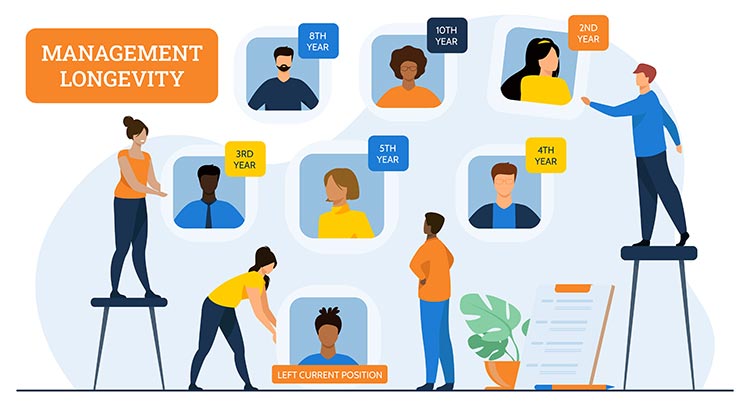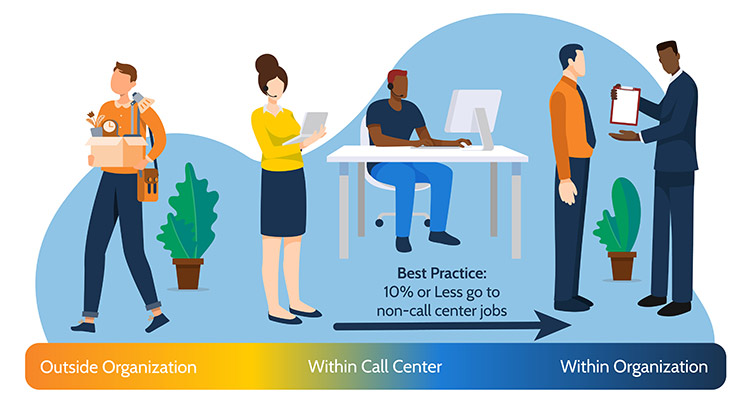Importance of Management Longevity for Delivering World-class Customer Service
Of the 500 leading North American call centers that SQM benchmarks annually, only 5% are at the world-class Voice of the Customer (VoC) First Call Resolution (FCR) performance level of 80% or higher. Achieving 80% or higher VoC FCR performance is SQM's standard for describing a world-class customer service call center.
SQM's research shows that FCR is the metric with the highest correlation to Csat out of all call center internal or external metrics. For example, there is a 1% improvement in FCR for every 1% improvement in customer satisfaction (Csat). Therefore, a call center performing at that the FCR world-class level is also performing at the world-class level for Csat.
SQM Group's research shows that in world-class FCR and Csat call centers, at all levels of management, at least 80% of them have been in their current position for at least three years and have been working at the call center for ten years or more. In addition, it is not uncommon at the VPs level to be in their positions for ten years or more.
The bottom line is that there is more stability, experience, and accountability at all levels of management in world-class Csat call centers for customer service delivery. A benefit that we see with such stability is that managers who implement customer service initiatives (e.g., people, processes, technology, and culture) can see those initiatives through to completion and beyond.

Turnover at the senior call center management level can have a profound impact on customer service delivery. For example, we have seen world-class call centers' FCR and Csat performance decrease by 15% in just one year after a senior manager FCR champion left the call center.
We believe that the main reason a call center customer service can quickly be lower is the lack of FCR and Csat focus. It is not uncommon for a new senior call center manager not to focus on FCR and Csat or view those metrics with the same level of importance as the previous senior call center manager who was an FCR champion.
It is not uncommon for the organization to hire call center agents and managers to eventually move to non-call center positions within the organization. Most people think this type of internal turnover is good because it gives call center agents and managers more opportunities to advance their careers within the organization.
You clearly can argue that it is good for an individual to get career advancement to a non-call center position. However, SQM's research has clearly shown that when too many agents and managers depart from the call center to move to non-call center positions within the organization, it has a negative impact on their customer service delivery.
A best practice seen in world-class Csat call centers is hiring people who want to have careers within the call center versus hiring people who want to have jobs within the organization. In most organizations, the call center has been used as a springboard for managers to advance to non-call center jobs. However, if this happens to be more than 10% of the agents or the management team in a given year, it can hurt customer service delivery.
In closing, SQM's view is that having agents and managers taking on jobs outside the call center but within the organization is good; it just needs to be 10% or less a year. SQM has never seen a world-class Csat call center have 10% or more of their call center agents and management leave and go to non-call center organizational jobs on an annual basis.

Quick Related Links
First Call Resolution Definition First Call Resolution PPT First Call Resolution Benefits
First Call Resolution Strategies First Call Resolution Operating Philosophy FCR Case Study Survey Data Calculate First Call Resolution What is a Good FCR Rate? Customer Quality Assurance VoC Closed-Loop Top 10 Call Center Metrics VoC Performance Management

